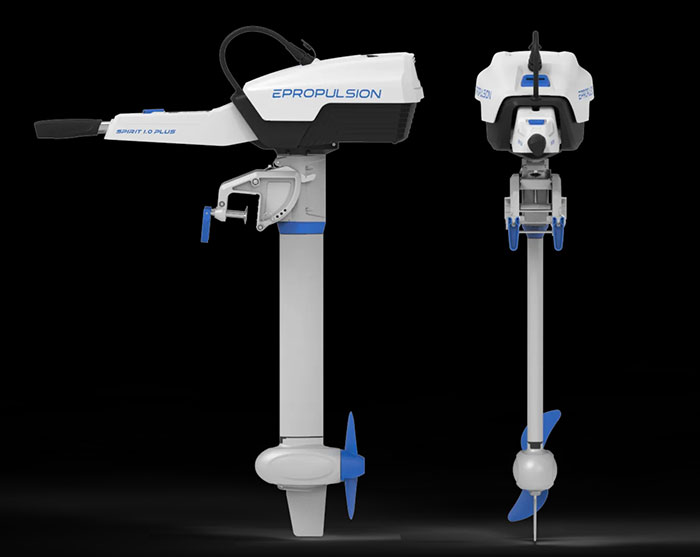Advertisement
Our contributing editor has used his new low-power electric outboard, with its dedicated carry-on battery, for two years now, and it looks like we have a convert!

With an electric outboard, the loudest thing you’ll hear is water lapping against the hull, the only emissions will come from you, humming as you enjoy the tranquility.
Count me among the original naysayers. During three decades of immersion in the marine industry, every new electric outboard I saw smacked of not-ready-for-primetime prototyping, fanciful claims, and marketing doubletalk. Meanwhile, my own hydrocarbon-chugging outboards propelled me across the surface of the water with ever-improving reliability and ease of use. Me? Become a believer in voltage-delivered velocity in an outboard motor form? Unlikely.
Then, for professional purposes, one day I clamped a 3-hp ePropulsion Spirit 1.0 Plus to the transom of my small fishing boat. In comparison to the old-tech electric trolling motor I'd been using on area lakes and ponds that prohibit gas, my speed doubled, my range quadrupled, and the weight of the old rig was shaved in half. It hit me that those tree-hugging electric lovers might be onto something.
Electric motors have been in use on boats since the 1880s when French engineer Gustave Trouve patented his first paddlewheel rig. As early as 1973, Ray Electric Outboards proved that you could design an electric power plant that clamped to the transom like any other outboard motor. Yet they've remained an exceptionally poor alternative to internal combustion due to one simple limiting factor: the ability to store enough "fuel"; (batteries) aboard the boat. And while plenty of manufacturers have developed electric outboards, they left the battery "solution"; up to the consumer, often with little or no advice as to just what that solution consisted of.
These LiFePO4 cathodes last longer and, according to the manufacturer, live through around four times as many discharges and charges than the older lead-acid batteries. Critically, some electric outboard manufacturers have begun designing these batteries specifically for their motors.
Advertisement
Net result? With a 3-hp model hitched to the transom of a jon boat or dinghy, in my experience with the ePropulsion Spirit 1.0 Plus, you can see speeds of around 5 mph and a range in the vicinity of 15 to 20 miles. The outboard actually looks like an outboard, and popping off the "powerhead"; makes for easy portability and charging.
Price is something of an issue with small, portable outboards. The ePropulsion goes for around $2,500 and the Torqeedo MSRP is $2,948. You can pick up a similarly sized gasoline eggbeater for more like $1,200. Then again, you'll also have to suffer through the noise, vibrations, and fumes that go along with internal combustion.
Other manufacturers are getting on board. During a visit to Lake X, Mercury's secret testing grounds in Florida, I got a first-hand look at the Mercury Avator electric outboard concept. Mercury's entry into the electric propulsion category incorporates a cowl-like compartment styled like their other outboards that has a door that swings open to accept a drop-in battery. No performance info is yet available. But, importantly, Mercury plans to provide dedicated, portable, quick-charging batteries to power the Avator.
The Takeaway
I've used my ePropulsion Spirit 1.0 Plus for more than two years now, and the extended range, increased speed, and reduced weight make it a far better option than the traditional trolling motor options I've used in the past. A gasoline outboard would certainly provide better range, but who needs to go more than 15 miles on small lakes and ponds on a 12-foot fishing boat?

Once you turn the tiller on one of these little electric outboards, you'll never want to yank on a starter cord and listen to the racket of internal combustion again.
One worry might be that the manufacturer decides to update the model (or goes out of business), and replacing the battery could become an issue — a problem many of us have experienced with electric power tools and similar items through the years. Time will tell, but that's a risk we take with many products. If you're in the market for one of these outboards, be sure to buy from a name-brand manufacturer that has some proven history.
